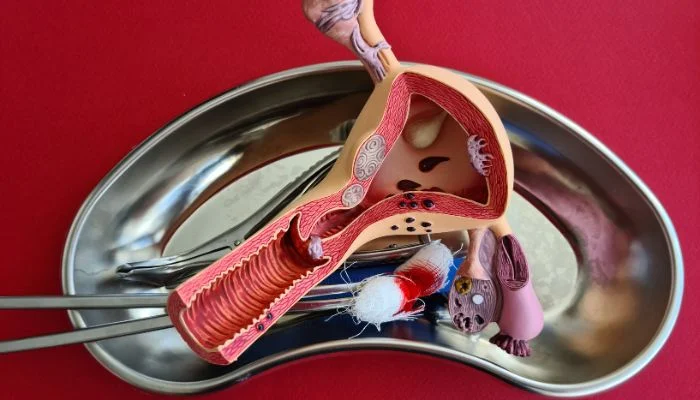Understanding Hysterectomy and Recovery
Hysterectomy is a surgical procedure that includes the removal of the uterus and may also entail the extraction of additional reproductive organs, such as the cervix, ovaries, and fallopian tubes.
It is performed for various medical reasons, including cancer, uterine fibroids, endometriosis, and chronic pelvic pain.
The recovery period after a hysterectomy can differ greatly based on the specific type of surgery and individual circumstances.
Types of Hysterectomy
Total Hysterectomy: The removal of uterus and cervix.
Subtotal or Partial Hysterectomy: In this procedure, the uterus is taken out, while the cervix remains in place.
Radical Hysterectomy: This surgical intervention entails the removal of the uterus, cervix, upper vaginal section, and the associated supportive tissues.
Hysterectomy Recovery Time and Timeline
The recovery time after a hysterectomy depends on several factors, including the patient’s overall health, the type of hysterectomy performed, and the surgical approach used (open surgery vs. laparoscopic surgery).
Open Hysterectomy Recovery Time:
Hospital Stay: Typically 2-5 days.
Recovery at Home: Around 4-6 weeks for most daily activities.
Full Recovery: 8-12 weeks, during which strenuous activities and heavy lifting should be avoided.
Laparoscopic Hysterectomy Recovery Time:
Hospital Stay: Often just overnight or 1-2 days.
Recovery at Home: Around 2-4 weeks for most daily activities.
Full Recovery: 6-8 weeks, with a quicker return to normal activities than open surgery.
Laparoscopic Hysterectomy Procedure
A laparoscopic hysterectomy is a minimally invasive operation where the surgeon creates a few small incisions (typically ranging from 0.5 to 1 cm each) in the abdomen to perform the procedure. Here’s how it’s typically done:
Anesthesia: General anesthesia is given to ensure the patient is unconscious and without pain during the procedure.
2. Incisions: The surgeon creates several small incisions in the abdomen to insert a laparoscope—a thin, lighted tube with a camera—and the required surgical instruments.,
3. Gas Insufflation: Carbon dioxide gas may inflate the abdomen, allowing the surgeon to see and work inside.
4. Procedure Execution:
The surgeon utilizes the laparoscope to view the pelvic organs and pinpoint the structures that need to be removed.
The uterus is meticulously separated from neighboring tissues and blood vessels.
The procedure may also involve removing the fallopian tubes and ovaries, known as a salpingo-oophorectomy.
5. Closure: After removal, the incisions are closed with stitches or surgical tape, and a sterile dressing is applied.
6. Recovery: The patient is monitored closely post-surgery for any complications. Pain management and guidance for recovery at home are provided.
Recovery Challenges and Considerations
Pain Management: It is common to experience pain after the surgery, which can be managed with the medications prescribed by your healthcare provider.
2. Activity Restrictions: Avoiding heavy lifting and strenuous activities is crucial during the initial recovery period to prevent complications like incisional hernias.
3. Emotional Well-being: Hysterectomy can have emotional implications, impacting fertility and body image. Therapy and support groups could be advantageous.
4. Resuming Normal Activities: A gradual return to daily life, guided by medical advice, can aid a smoother recovery process.
Complications and Monitoring
Complications following a hysterectomy may include infection, bleeding, damage to surrounding organs, and adverse reactions to anesthesia. It’s crucial to monitor for symptoms of complications, such as excessive bleeding or intense pain, after the surgery.
Long-term Effects and Follow-up
Long-term effects of hysterectomy include menopause symptoms if the ovaries are removed, changes in sexual function, and potential pelvic organ prolapse. Regularly scheduled visits with healthcare providers are crucial to monitor developments and handle concerns.
The recovery time following a hysterectomy can differ based on the specific surgery performed and personal health factors.

